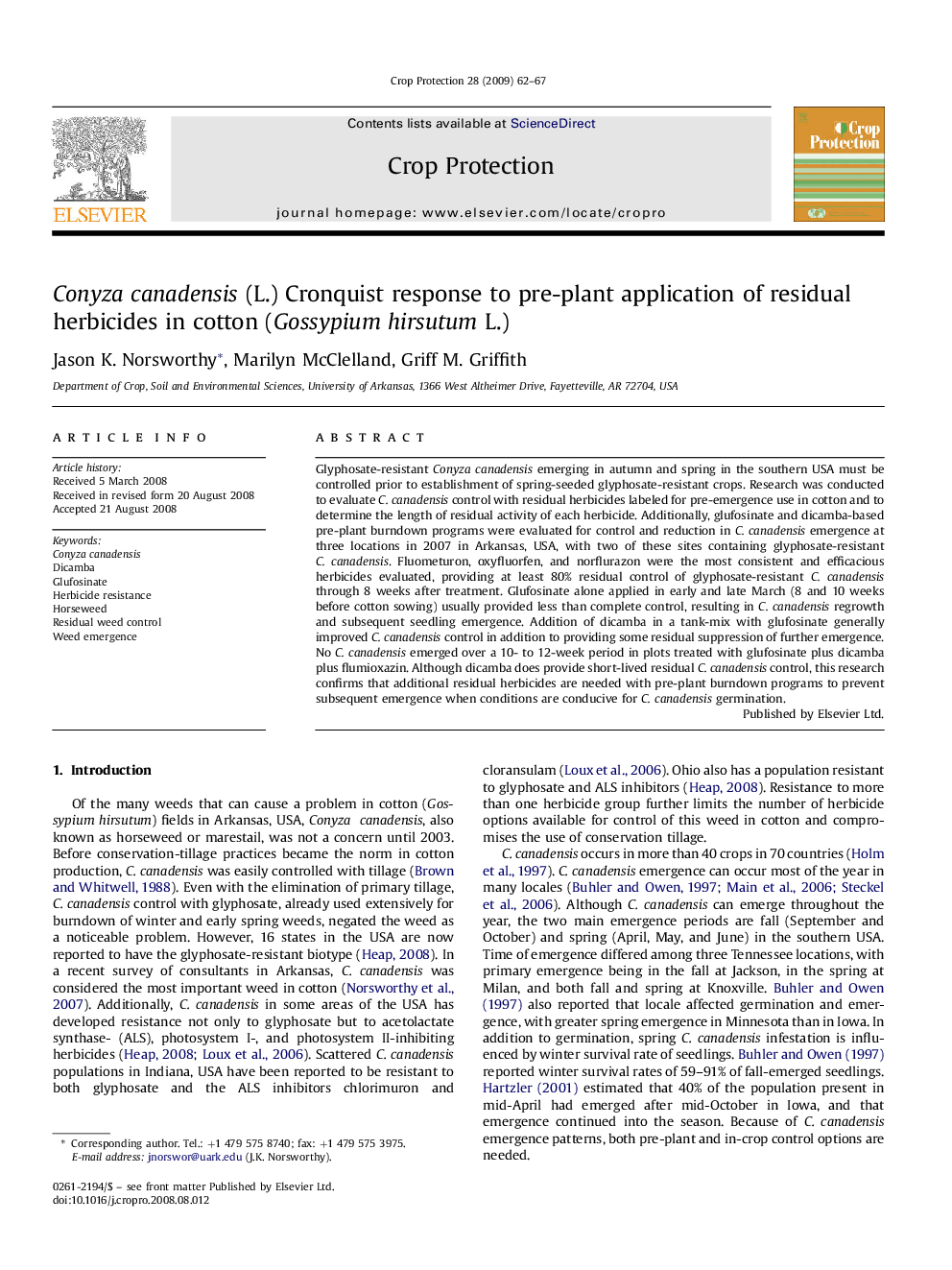| Article ID | Journal | Published Year | Pages | File Type |
|---|---|---|---|---|
| 4507548 | Crop Protection | 2009 | 6 Pages |
Glyphosate-resistant Conyza canadensis emerging in autumn and spring in the southern USA must be controlled prior to establishment of spring-seeded glyphosate-resistant crops. Research was conducted to evaluate C. canadensis control with residual herbicides labeled for pre-emergence use in cotton and to determine the length of residual activity of each herbicide. Additionally, glufosinate and dicamba-based pre-plant burndown programs were evaluated for control and reduction in C. canadensis emergence at three locations in 2007 in Arkansas, USA, with two of these sites containing glyphosate-resistant C. canadensis. Fluometuron, oxyfluorfen, and norflurazon were the most consistent and efficacious herbicides evaluated, providing at least 80% residual control of glyphosate-resistant C. canadensis through 8 weeks after treatment. Glufosinate alone applied in early and late March (8 and 10 weeks before cotton sowing) usually provided less than complete control, resulting in C. canadensis regrowth and subsequent seedling emergence. Addition of dicamba in a tank-mix with glufosinate generally improved C. canadensis control in addition to providing some residual suppression of further emergence. No C. canadensis emerged over a 10- to 12-week period in plots treated with glufosinate plus dicamba plus flumioxazin. Although dicamba does provide short-lived residual C. canadensis control, this research confirms that additional residual herbicides are needed with pre-plant burndown programs to prevent subsequent emergence when conditions are conducive for C. canadensis germination.
